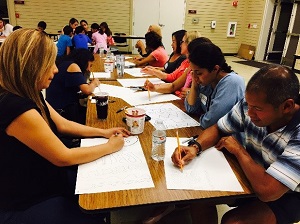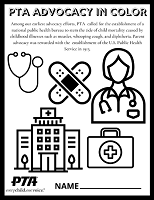By Beth Meyerhoff, California State PTA Education Legislative Advocate
College opportunities for incarcerated teens and adults increased significantly when Governor Gavin Newson signed Assembly Bill (AB) 417 (McCarty) into law on October 6, 2021. This bill establishes guidance on how to spend the $10 million (already allocated in California’s 2021-22 State Budget) for the Rising Scholars Network. The Rising Scholars Network Project, under the direction of the California Community Colleges Chancellor’s Office, mandates that community colleges increase community college course access and support for students transitioning from incarceration, or who have been “justice-involved.”
AB 417 authorizes 50 of California’s community colleges to join the Rising Scholars Network in order to increase the number of justice-involved students attending. The bill also requires reporting and recommendations on the possible expansion of the Rising Scholars Network to all community college districts and campuses.
Prior legislation (Senate Bill (SB) 1391, Hancock) created a pilot program of colleges offering instruction inside prisons. According to the bill analysis, over 5,000 students are enrolled each semester in these programs and 19 colleges piloted programs. According to a Rand Corporation report, Evaluating the Effectiveness of Correctional Education: A Meta-Analysis of Programs That Provide Education to Incarcerated Adults, inmates are 43% less likely to recidivate after receiving correctional education.
California State PTA supports legislation which improves academic achievement for all students. We support efforts to study issues related to the system of juvenile justice and to work for reforms that will best meet the needs of youth in the juvenile justice system.
PTA strongly believes that every student who meets the established eligibility requirements must be allowed access to the appropriate level of California’s system of higher education; financial hardship should not prohibit eligible students from attending institutions of higher education and efforts should be made to provide financial assistance to students.
The Legislation Action team relied upon the following authorities to support AB 417:
ACHIEVEMENT: ELIMINATING THE GAP http://downloads.capta.org/res/AchievementEliminatingTheGap.pdf
PTA has resolved to advocate for legislation and public policies that improve academic achievement for all students and eliminate the achievement gap.
JUVENILE JUSTICE REFORM – A PRIORITY http://downloads.capta.org/res/JuvenileJusticeReform-APriority.pdf
PTA has resolved to study issues related to the system of juvenile justice in California and work for reform that will best meet the needs of children and youth who come in contact with the Juvenile Justice System; and be it further
Position Statement:
Basic Education
http://toolkit.capta.org/advocacy/position-statements/basic-education/
California State PTA believes that all children and youth have the responsibility and should have the opportunity to develop their abilities to their fullest potential.
Position Statement:
Higher Education
http://toolkit.capta.org/advocacy/position-statements/education-higher-education/
California State PTA believes that … investment in students’ postsecondary education enriches the lives of all Californians, and provides skilled workers to meet the needs of California’s global economy.

 California State PTA believes that all children deserve a quality education regardless of the community in which they live, the color of their skin, their language, their gender identity, or their immigration status.
California State PTA believes that all children deserve a quality education regardless of the community in which they live, the color of their skin, their language, their gender identity, or their immigration status. This article was written by Kathleen Fay, member of the California State PTA Legislation Team.
This article was written by Kathleen Fay, member of the California State PTA Legislation Team. This article was written by Shereen Walter, California State PTA’s Director of Legislation.
This article was written by Shereen Walter, California State PTA’s Director of Legislation.




